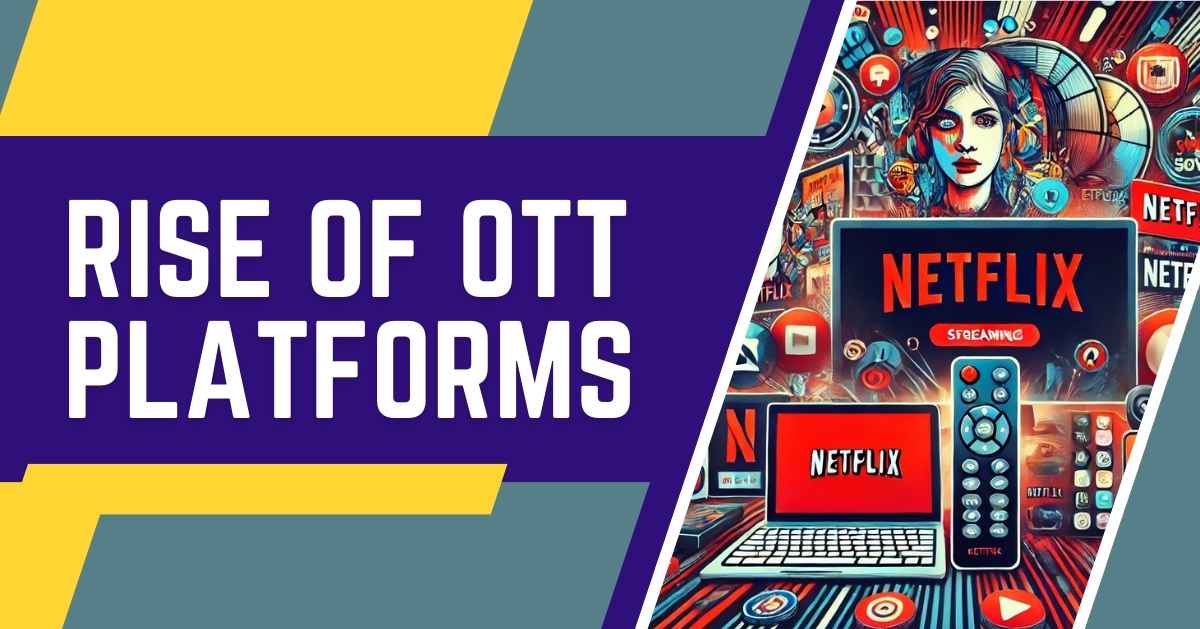In recent years, the way we consume content has undergone a dramatic transformation. Over-the-top (OTT) platforms have emerged as a dominant force, reshaping the entertainment landscape and redefining how audiences engage with movies, series, documentaries, and live events. The rise of OTT platforms is not merely a trend but a cultural shift driven by technology, changing consumer preferences, and innovative business models.
What Are OTT Platforms?
OTT platforms refer to services that deliver video, audio, and other media content over the Internet, bypassing traditional distribution channels like cable or satellite television. Some of the most popular OTT includes Netflix, Amazon Prime Video, Disney+, Hulu, and HBO Max. These platforms offer a wide range of content, from blockbuster movies to niche series, catering to diverse audience tastes and preferences.
The Factors Driving the Rise of OTT Platforms
1. Technological Advancements
The widespread availability of high-speed internet and advancements in smartphone technology have played a pivotal role in the growth of OTT platforms. With 4G and 5G networks becoming the norm, users can stream high-definition content seamlessly. Additionally, the proliferation of smart TVs and streaming devices like Roku and Amazon Fire Stick has made OTT content easily accessible on larger screens.
2. Changing Consumer Preferences
Modern consumers demand flexibility and convenience. OTT allow users to watch their favorite shows and movies anytime, anywhere, and on any device. This shift from appointment viewing to on-demand consumption has been a significant driver of the OTT boom.
3. Cost-Effectiveness
Compared to traditional cable or satellite subscriptions, OTT platfrms are often more affordable. Many services offer tiered pricing models, including ad-supported free tiers, making premium content accessible to a broader audience.
4. Original Content and Global Appeal
OTT have invested heavily in producing original content that resonates with global audiences. Shows like Stranger Things, The Crown, and The Mandalorian have garnered massive followings, creating cultural phenomena and driving subscriptions.
5. Pandemic-Driven Adoption
The COVID-19 pandemic accelerated the adoption of OTT platform as theaters, and other entertainment venues shut down. People turned to streaming services for entertainment, boosting subscriptions and solidifying OTT’s place in the entertainment industry.
How OTT Platforms Are Disrupting Traditional Media
The rise of OTT platforms has posed significant challenges to traditional media outlets. Cable and satellite TV providers are witnessing a decline in subscriptions as more households cut the cord. Moreover, film studios are increasingly opting to release movies directly on OTT and bypassing theatrical releases altogether.
1. Content Diversity
Traditional media often caters to a broad audience, limiting niche content options. OTT platforms, however, offer an extensive range of genres, languages, and styles, ensuring there is something for everyone.
2. Personalization
OTT platforms leverage advanced algorithms to provide personalized recommendations, enhancing the user experience. This level of customization is something traditional media cannot match.
3. Global Reach
OTT platforms have a global presence, allowing content creators to reach audiences worldwide. This democratization of content distribution has enabled regional and independent creators to find success on a global stage.
Challenges Faced by OTT Platforms
Despite their meteoric rise, OTT platforms face several challenges:
1. Content Saturation
The growing number of OTT services has led to an oversupply of content, making it difficult for users to decide what to watch. Platforms must continuously innovate to retain their audiences.
2. Rising Costs
As competition intensifies, the cost of acquiring and producing high-quality content is escalating. This financial pressure could lead to higher subscription fees, potentially alienating cost-conscious consumers.
3. Regulatory Hurdles
Governments worldwide are introducing regulations to monitor OTT content, which could impact creative freedom and operational flexibility.
4. Piracy
Digital content is vulnerable to piracy, which can affect revenue streams and the overall profitability of OTT platforms.
The Future of OTT Platforms
The future of OTT platforms looks promising, with several trends shaping their evolution:
- Integration of AI and AR
Artificial Intelligence (AI) and Augmented Reality (AR) are set to revolutionize the OTT experience. From advanced content recommendations to immersive viewing experiences, technology will continue to enhance user engagement.
- Localized Content
Platforms are focusing on creating content tailored to regional audiences. For example, Netflix and Amazon Prime Video have ramped up their investments in local-language productions in countries like India, South Korea, and Brazil.
- Hybrid Monetization Models
Many OTT platforms are exploring hybrid models combining subscription-based and ad-supported content to cater to different audience segments.
- Live Streaming and Interactive Content
The inclusion of live sports, concerts, and interactive shows will further diversify OTT offerings, attracting a broader range of viewers.
Conclusion
The rise of OTT platforms marks a new era in entertainment, characterized by convenience, diversity, and innovation. As these platforms continue to evolve, they are not only redefining how we consume content but also influencing cultural narratives and global connectivity. While challenges remain, the potential for growth and transformation in the OTT space is immense, ensuring its place as a cornerstone of modern entertainment.

